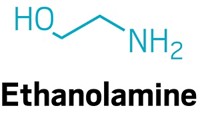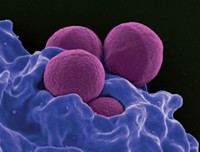Advertisement
Grab your lab coat. Let's get started
Welcome!
Welcome!
Create an account below to get 6 C&EN articles per month, receive newsletters and more - all free.
It seems this is your first time logging in online. Please enter the following information to continue.
As an ACS member you automatically get access to this site. All we need is few more details to create your reading experience.
Not you? Sign in with a different account.
Not you? Sign in with a different account.
ERROR 1
ERROR 1
ERROR 2
ERROR 2
ERROR 2
ERROR 2
ERROR 2
Password and Confirm password must match.
If you have an ACS member number, please enter it here so we can link this account to your membership. (optional)
ERROR 2
ACS values your privacy. By submitting your information, you are gaining access to C&EN and subscribing to our weekly newsletter. We use the information you provide to make your reading experience better, and we will never sell your data to third party members.
Environment
Science Concentrates
January 10, 2005
| A version of this story appeared in
Volume 83, Issue 2
Synthetic methods to incorporate carborane moieties into organosilicon scaffolds to make dendrimers have been reported for the first time by Rosario Núñez and Francesc Teixidor of the Barcelona Institute of Materials Science, in Spain, and their colleagues [Org. Lett., 7, 231 (2005)]. Carboranes are carbon-boron polyhedral clusters, such as C2B10H12, that are readily derivatized. Their applications include boron neutron-capture cancer therapy, selective extraction of radionuclides, and catalysis. The research team used two approaches to make the first-generation dendrimer shown (Si = purple, C = blue, B = orange, H = white). One method involves reacting a carbosilane, Si[CH2CH2Si(CH3)2Cl]4, with four equivalents of the lithium salt of a phenyl-substituted C2B10 carborane; the carbosilane becomes the core of the dendrimer structure. The second method involves forming a silyl-substituted carborane followed by its reaction with tetravinylsilane, Si(CH=CH2)4.
Household dust may be a significant source of polybrominated diphenyl ethers (PBDEs) for humans, according to a study released by NIST and EPA [Environ. Sci. Technol., published online Dec. 29, 2004, http://dx.doi.org/10.1021/es0486824]. Levels of PBDEs, used widely as flame retardants, have increased in human blood and breast milk over the past 25 years. Yet scientists haven't been able to pin down PBDE sources. Earlier work found the chemicals in groceries, which suggested dietary ingestion. However, because PBDEs are used in many household products, including computers, TVs, and couches, NIST's Heather M. Stapleton and her colleagues tested household dust and clothes dryer lint from 17 homes in the southern U.S. They found surprisingly high levels of the compounds, ranging from 700 to 30,100 ng of PBDE per g of dust. Outdoor dirt samples usually average around 100 ng per g.
Swiss researchers have shown that thiol inhibitors of endothelin-converting enzyme 1 (ECE-1) represent a promising new type of anticancer agent. The endogenous peptide endothelin-1 (ET-1) is known to promote human tumors by inducing mitosis and preventing apoptosis of cancer cells. Antagonists to ET-1--compounds that prevent it from activating its receptors--are being studied as possible cancer treatments. ET-1 might also be blocked by inhibiting ECE-1, which catalyzes production of ET-1 from an inactive precursor peptide. ECE-1 inhibitors have been identified before, but they've only been studied as potential treatments for cardiovascular or pulmonary disorders. Now, thiol-containing ECE-1 inhibitors (such as the structure shown and a thioacetyl prodrug version) have been synthesized and evaluated for anticancer activity by Johannes D. Aebi of Hoffmann-La Roche, Basel; Lucienne Juillerat-Jeanneret of the University of Lausanne; and coworkers [J. Med. Chem., published online Dec. 31, 2004, http://dx.doi.org/10.1021/jm040857x]. Their experiments show that the compounds inhibit glioblastoma cell growth at low concentrations. Glioblastomas are malignant brain tumors that are currently difficult to treat, and ECE-1 inhibitors may provide a new way to fight such cancers.
A team at the University of Southern Denmark and the University of Dundee, in Scotland, has used proteomic techniques to study the flux of 489 proteins in the human nucleolus, the structure in the cell nucleus that coordinates the synthesis and assembly of ribosomal subunits, showing that proteomics can measure both dynamic and static situations. Using mass spectrometry and stable-isotope labeling, team leaders Matthias Mann, Angus I. Lamond, and coworkers analyze changes over time in the protein composition of the nucleolus in response to drugs that inhibit transcription or protein degradation [Nature, 433, 77 (2005)]. Different nucleolar components show major differences in their kinetics. For example, members of the DEAD box helicase family of proteins respond with a range of kinetics, whereas the subunits of RNA polymerase I leave the nucleolus at almost identical rates. Although many nucleolus components accumulate only in the presence of ribosomal RNA, other protein levels remain steady or even increase in response to transcription inhibition, suggesting that the nucleolus is not a transient structure that breaks down in the absence of transcription.
Further evidence has surfaced that microbes can thrive in seemingly inhospitable, salty environments . An international team led by microbial ecologist Paul W. J. J. van der Wielen at the University of Groningen in Haren, the Netherlands, found a thriving ecosystem of microorganisms, including a new order of the saline-loving Euryarchaeota, in thousand-year-old anoxic, sequestered salt basins far beneath the eastern Mediterranean Sea [Science, 307, 121 (2005)]. Of particular note is the discovery of a unique prokaryotic system in the Discovery Basin, which is almost saturated with magnesium chloride and is one of the most extreme saline environments known on Earth. These prokaryotes contribute to a biogeochemical cycle that includes sulfate reduction and methane production. The work "widens the picture of microbial adaptation to salinity," the authors write, and should increase interest in saline environments elsewhere in the solar system, such as that believed to exist below the icy surface of Jupiter's moon Europa.








Join the conversation
Contact the reporter
Submit a Letter to the Editor for publication
Engage with us on Twitter